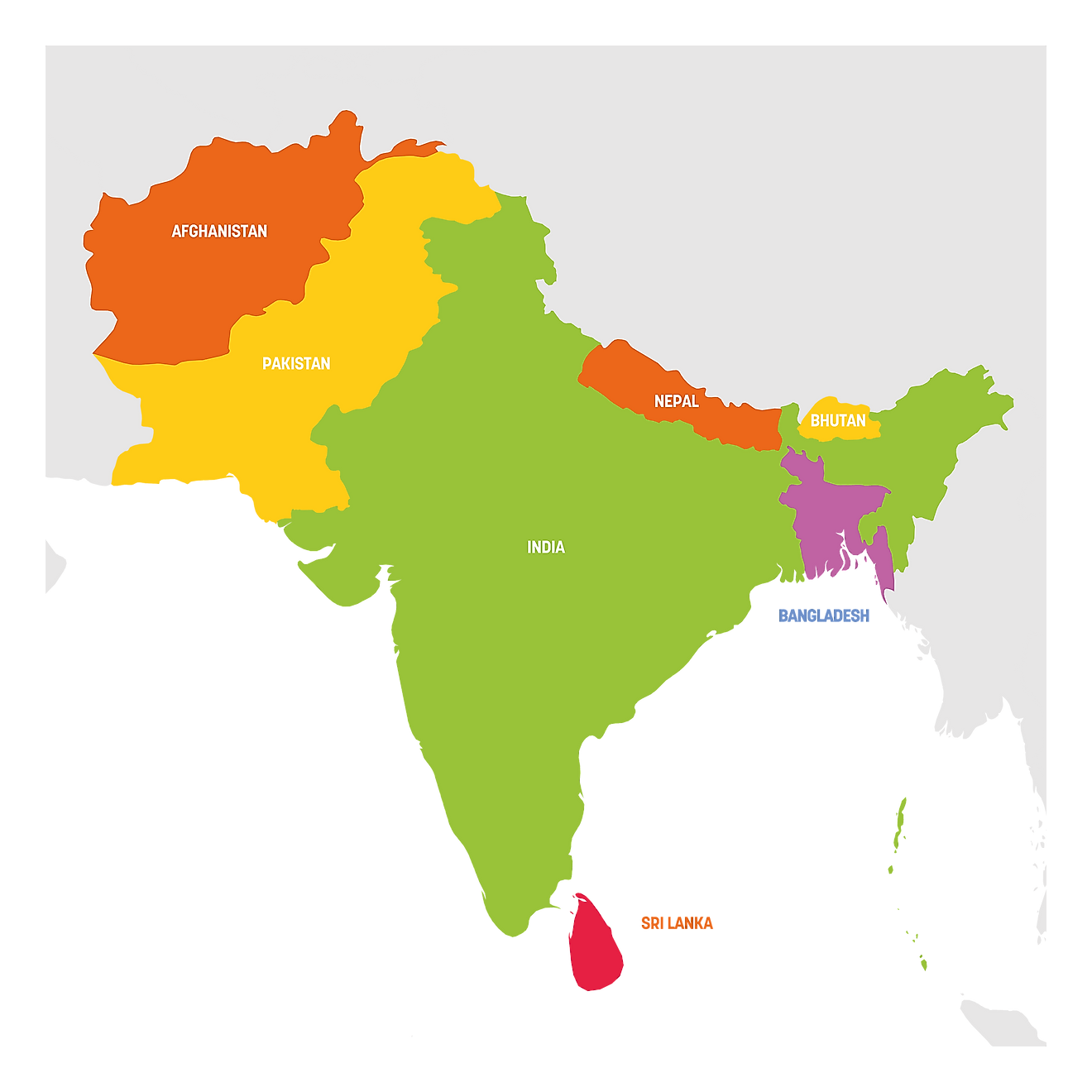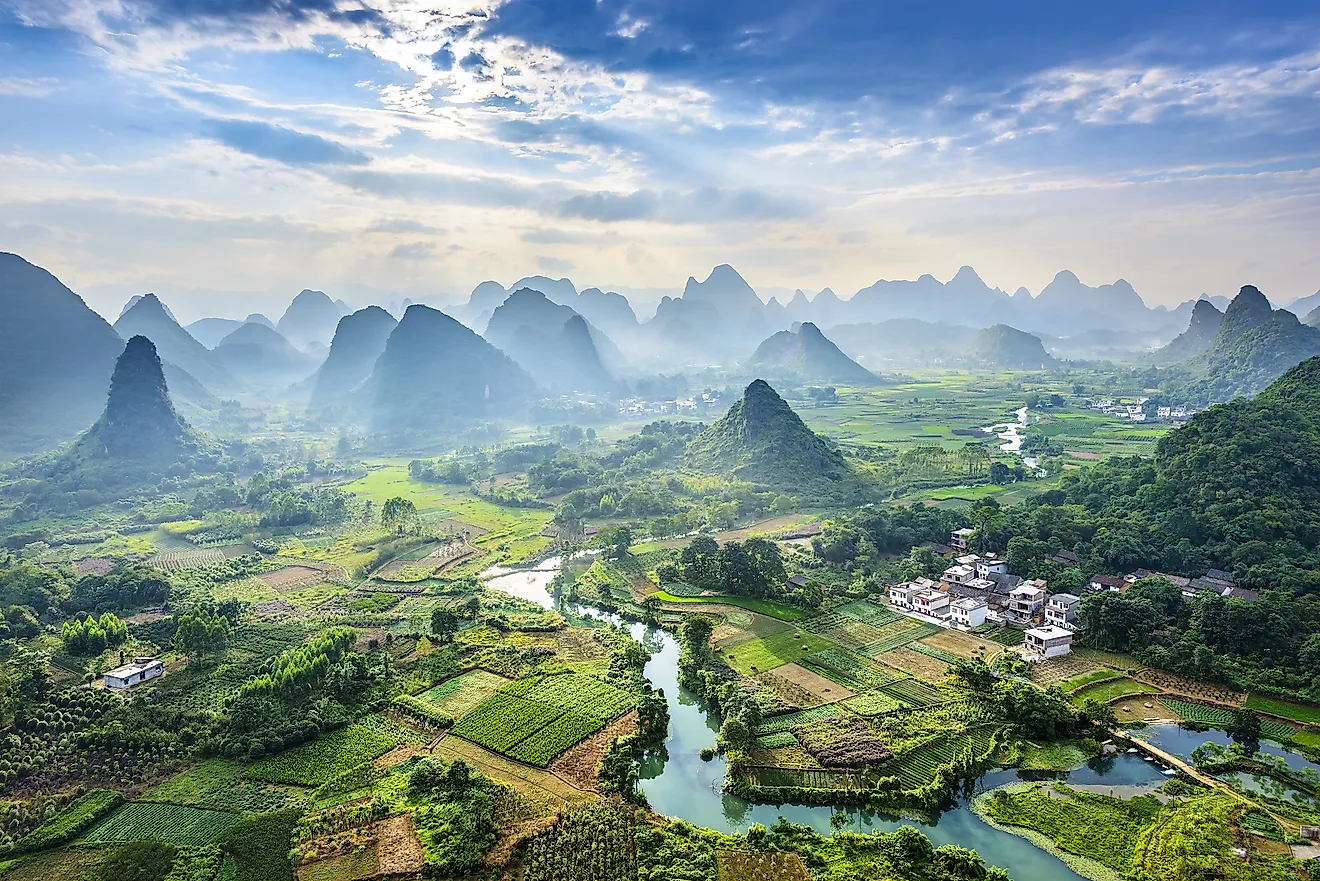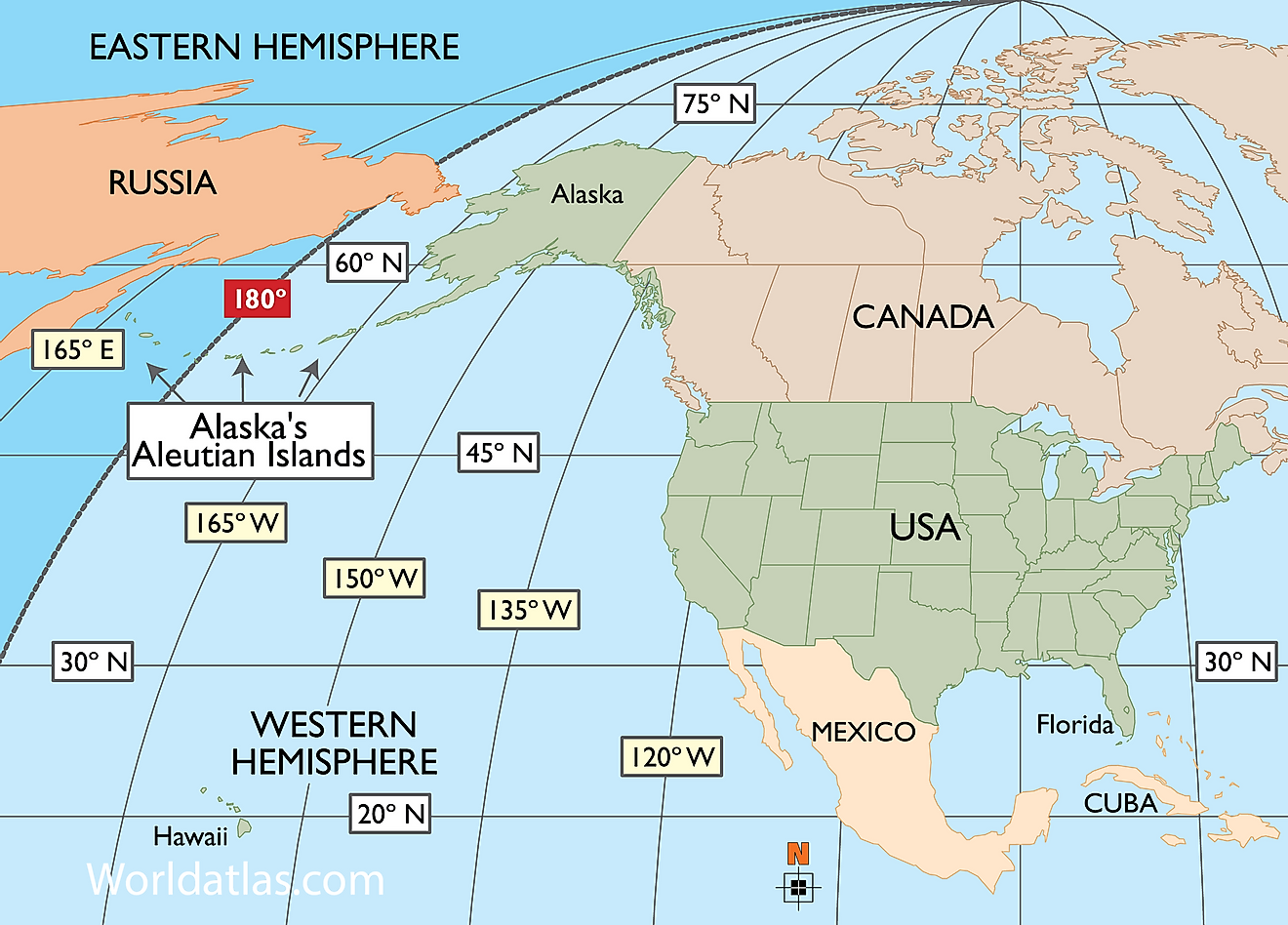Effects Of Earthquakes
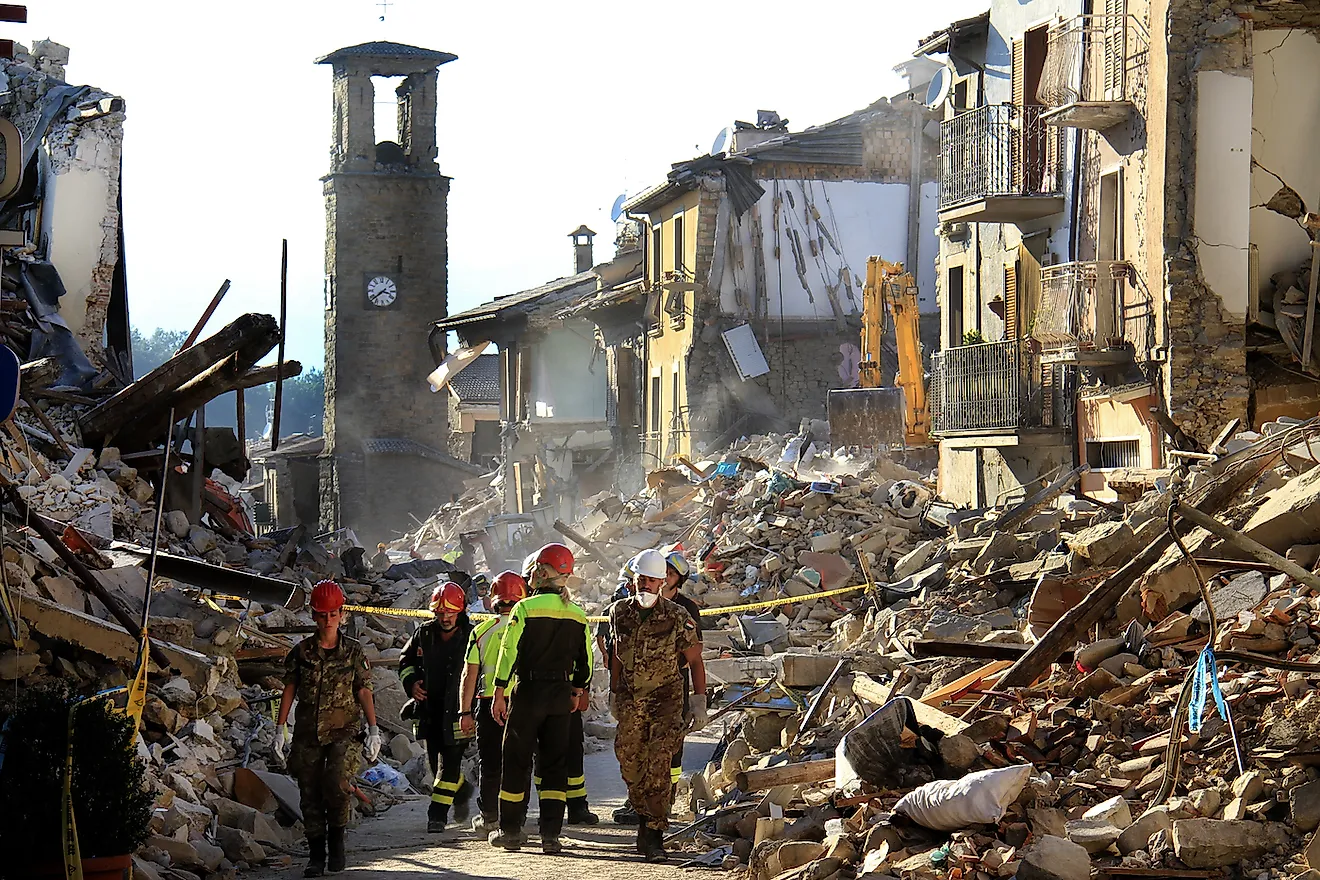
- Ripple effects from earthquakes can cause lasting damage to the geographic landscape in the area, know as ground surface deformation, which often results in other shifts in nearby rivers and lakes.
- Earthquakes can often induce other natural disasters such as land slides, tsunamis, fires or floods
- Though earthquakes that happen below the ocean tend to be less destructive to human infrastructure, they can result in tsunamis, which in turn can be devastating
Earthquakes can be one of nature’s most devastating natural disasters, which not only affect the earth at the time of impact, causing damage with seismic waves, but can have lasting effects on the landscape and surrounding areas as the earth shifts, tilts or drops unexpectedly.
When energy waves, also known as seismic energy, ripples through the under layers of the Earth and makes their way to the surface, the energy can be felt in the form of an earthquake. Usually, this means that the Earth’s crust is shifted or displaced in some way. Sometimes, the earth will fold or buckle, and in other cases, sections of earth will lift or drop along fault lines and fissures. Because of this, earthquakes can have lasting and devastating effects on their surrounding areas. Not only can the shift itself cause damage and danger in the moment, but this altering of the geographical landscape can cause ripple effects and long lasting consequences for the area. Whether they are short term or long term, there are a variety of ways in which earthquakes can affect the landscape, wildlife and human life in an impacted area.
Contents:
- Ground Surface Deformation
- Buildings And Infrastructure Damage
- Landslides
- Tsunamis
- Flash Floods
- Fires
Ground Surface Deformation
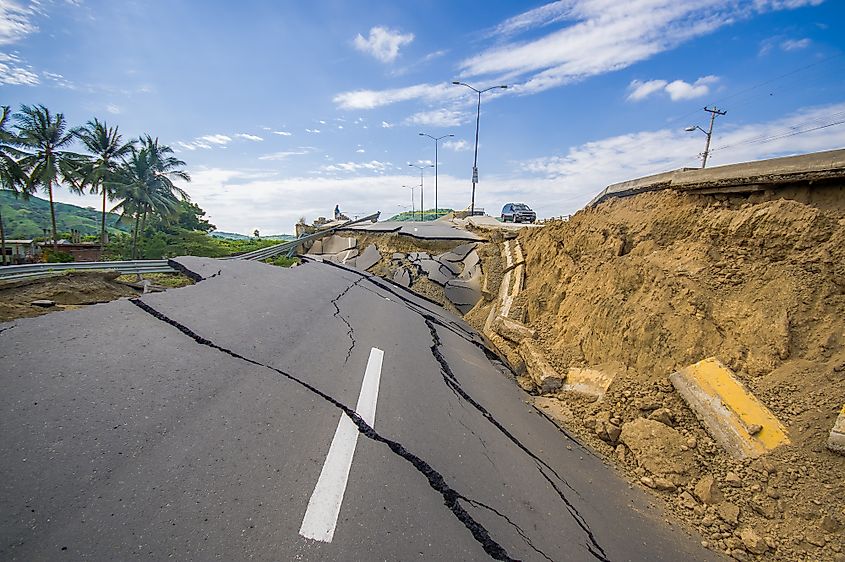
This shifting of the Earth’s crust, in relation to earthquakes and seismic activity is often referred to as ground surface deformation or ground rupture. This refers to the resulting changes , fractures or ruptures which occur in or on the surface of the Earth in any given area, after it is exposed to severe seismic activity. The severity of the impact, and damage is determined by not only the magnitude of the earthquake - ie the intensity of the seismic waves - but also the distance of a given area from the epicenter of the quake, and the geomorphological and geological landscape of the area.
Different types of seismic waves also affect the earth differently. Surface waves can be either Rayleigh waves or love waves, and these are the types of seismic activity that cause damage to the Earth’s surface. Rayleigh waves move in a rolling, circular formation, longitudinally, compressionaly, and with dilation all at the same time. Love waves only move in two directions instead of three, but can be equally destructive. These waves move backwards and forwards in a jerking motion, perpendicularly to the source of the earthquake. This often causes breaks and fracturing in the crust.
Buildings And Infrastructure Damage
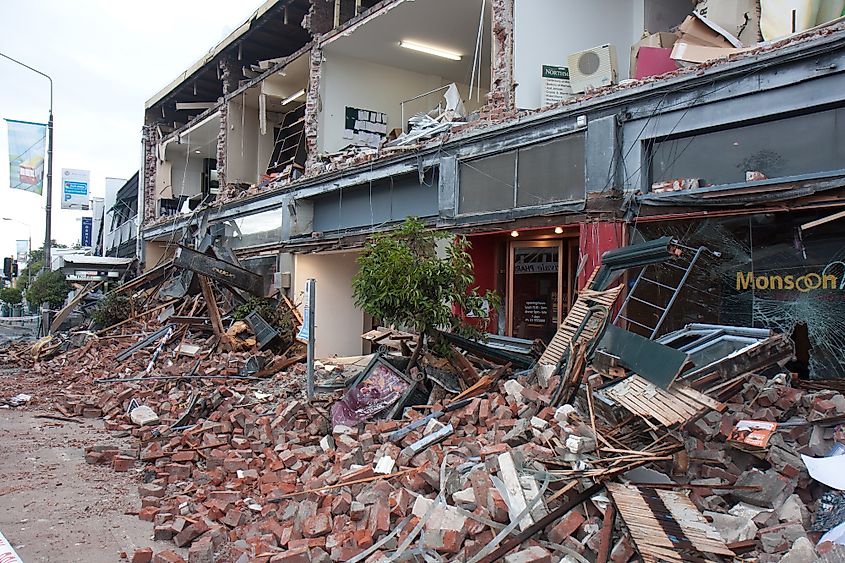
Most obviously, earthquakes can have an impact on human life and man-made structures. As the ground moves, shakes and shifts, there is a significant risk to human life most often from debris and collapse of buildings and structures. While some buildings are made with fault lines and seismic activity in mind, few can withstand strong quakes, and will often buckle, shake and collapse under such activity. This causes significant property damage to everything from homes to office buildings, roads, bridges, transport lines and a variety of manmade infrastructure. Property and structural damage can cause hazards to humans and animals, as well as cause significant financial problems to companies or governments that then have to repair or rebuild after a major incident.
Landslides
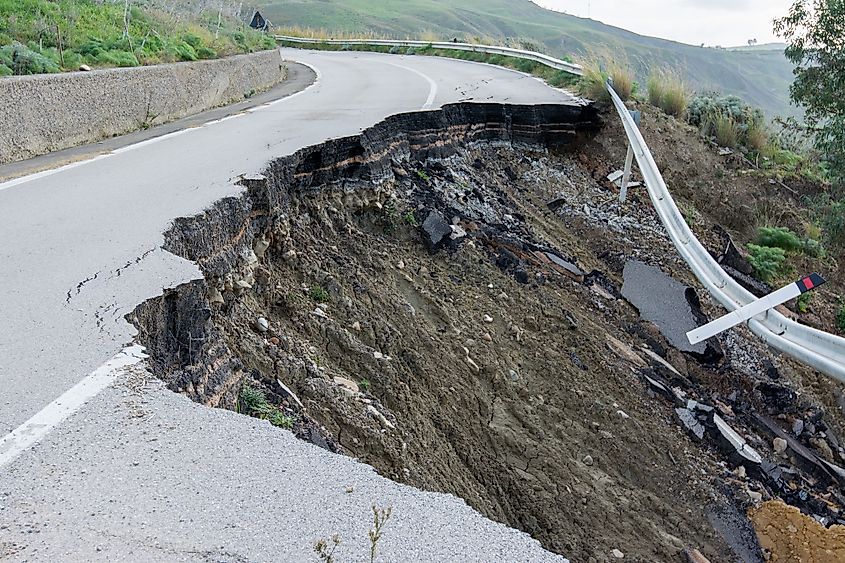
Not only can earthquakes cause immediate and intense damage to the Earth’s surface due to shakes, fractures and faults, but this shifting of the Earth can create ripple effects which cause other geographically destructive phenomena. One such common result is a landslide. Landslides follow earthquakes as the shaking and shifting of the earth’s surface and crust due to shock waves cause earth on hills, mountains and cliffs to break free or become dislodged. In these cases large sections of earth, mud or rock can break free and fall to lower ground. In some cases, entire hillsides with settlements or buildings built into them can fall away, causing loss of life, injury, and mass property damage.
This is seen time and time again throughout history. As recently as October 2019, Cotabato in the Philippines experienced three successive earthquakes, all of which triggered large fatal landslides.
Tsunamis
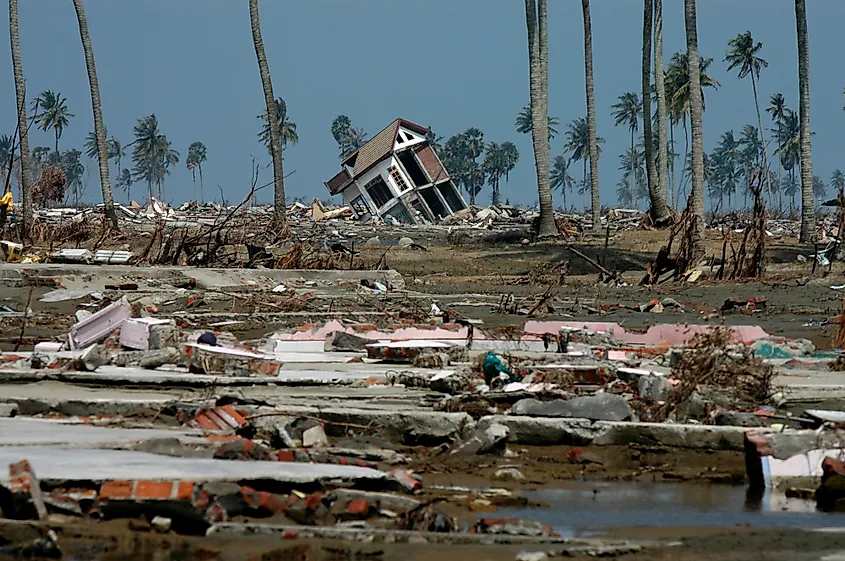
Tsunamis are one of Earth’s other great natural disasters, and unfortunately, they often go hand in hand with earthquakes. While the name earthquake brings to mind shifting of the earth itself, seismic activity can also occur in the crust below sea level. This seismic activity is usually harmless, in that it ripples out and dissipates within the ocean, but if the seismic activity occurs closer to a shoreline or in shallower waters, it can create giant and highly destructive waves. In this way, tsunamis often follow earthquakes, and almost exclusively ones that register as 7.5 or higher on the richter scale.

Tsunami waves are huge ocean waves that can travel great distances at alarming speed. A tsunami wave can travel anywhere from 500 to 800 kilometers per hour, but slow as they reach the shore. Unfortunately, this slowing down does not make them less dangerous, as the wave actually grows in size as its speed decreases. A wave from a tsunami can easily reach over 100 feet tall in cases of strong seismic activity, and reach a shoreline with alarming force and speed. These waves often travel outward from an epicenter, and can have devastating effects on coastlines as the tremendous force of water overwhelms coastlines, drowning anything in its path.
Two of the most devastating tsunamis in recorded history have occurred in the last 20 years. In 2004, the world was shocked by a 9.1 magnitude earthquake off the coast of Sumatra which devastated locals and vacationers on December 26th. The primary wave measured upwards of 50 m, resulting in roughly 230.000 deaths and $10billion USD in damages. Similarly, 2011 saw a 9.0 magnitude earthquake hit offshore Japan, a catastrophe resulting in a 10m high wave that reportedly moved at a speed as great as 800km/hr. This, in turn, brought about a nuclear power plant leak, a mass evacuation of 452,000 people, and damages over $235 billion USD.
Flash Floods
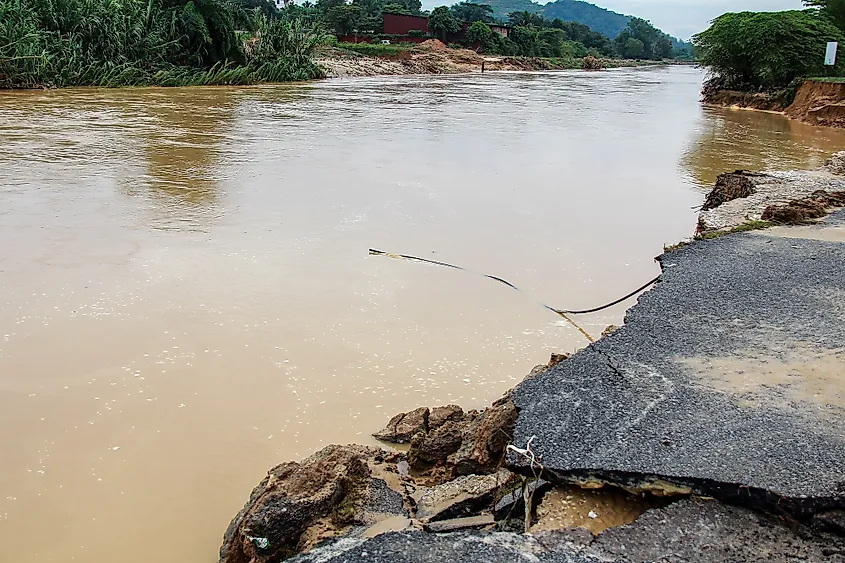
Similar to landslides or tsunamis, floods can occur following an earthquake. While tsunamis create giant waves that can flood coastlines and harbours,which in turn results in mass flooding, flash floods are often the result of breaking dams. These can be either man made or natural dams, but the results are the same - if a dam is damaged due to an earthquake, large volumes of water can be unexpectedly released, flooding residential areas with mass amounts of pooled water from held reservoirs.
Similarly, earthquakes can disrupt rivers and natural bodies of water, causing redirection over natural flood plains. This can be caused by drops, cracks or breaks in the earth, which allow or force the water to take new paths, or by blockages. Blockages occur when debris or some other obstruction prevents a river or body of water from flowing down its natural course. These blockages force the water to follow a new path, often causing flash floods. This can be destructive to human settlements, but also natural landscapes, ecosystems and wildlife.
Additionally, when earthquakes cause landslides, water from either the underground water table, or nearby water sources can mix with soil and mud to create dangerous landslide/flood combinations, which can whip out settlements, drown roads, and flood various types of human infrastructure.
Fires
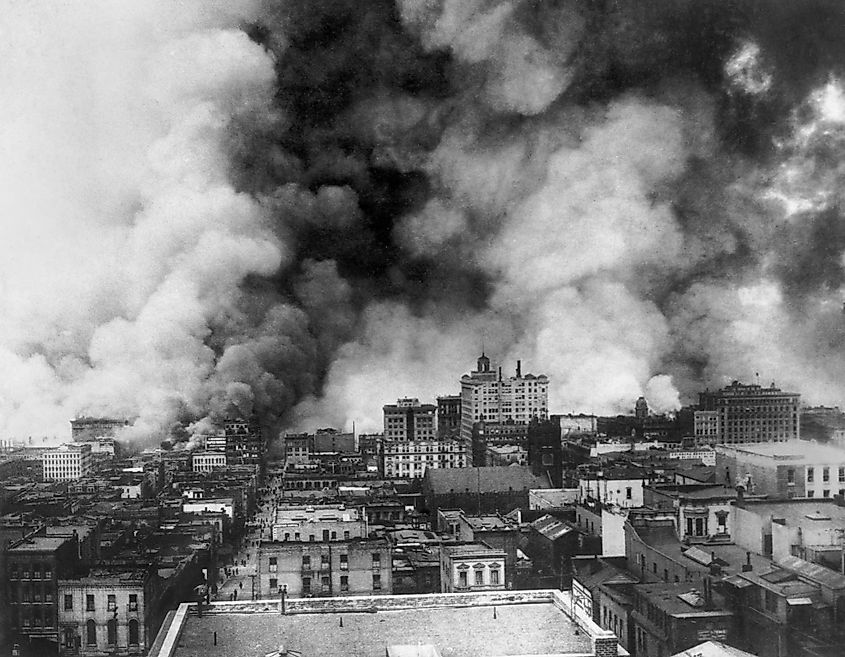
Another major side effect of earthquakes are fires. In the past, earthquake induced fires caused high death tolls and destruction as in-home flames like fireplaces, candles or gas lamps were disrupted, and readily available fuels caught fire.
In the United States, the biggest example of such an incident was in 1906, when an earthquake caused fires that destroyed much of San Francisco. Over a century later, such hazards have been greatly reduced, and firefighting technology has also improved, but the risk of fires post earthquake still remains. In more modern times, fire hazards include electrical wires, blast furnaces, gas leaks and reactors.
Another issue with fires that occur during earthquakes is that it can be very difficult to put them out in a normal or efficient manner. Sometimes, water pipelines can crack or burst due to the earthquake itself, or in other cases it is merely a logistical issue, where workers and trucks are unable to easily access the fires or water supplies as roads are torn up, or debris has restricted normal movement. Both this and the increase in potential fires can cause further damage to areas hit by earthquakes.









